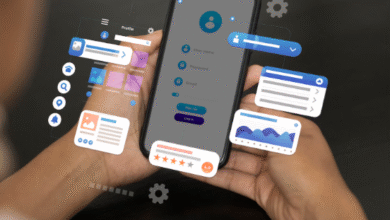How to Build a Grocery Delivery App in 2025 Using AI and Predictive Ordering?
The grocery delivery industry has seen significant change in recent years as a result of a combination of shifting consumer preferences, technological breakthroughs, and an increasing need for convenience. In 2025, AI and predictive ordering will make grocery delivery apps faster, smarter, and more personalized than ever.
This article will help you understand the necessary steps, the role of artificial intelligence and predictive ordering, and the technology stack needed to compete in a rapidly growing market if you’re considering releasing your grocery delivery app in 2025. Whether you want to build a delivery app for groceries, meal kits, or essentials, these insights will guide you in creating a competitive and future-ready solution.
Why AI and Predictive Ordering Are Game-Changers in 2025
Artificial intelligence is becoming the foundation of modern supermarket delivery services, not just a value-added feature. AI-powered predictive ordering forecasts what a user is likely to order next by analyzing past purchases, seasonal trends, consumer behavior, and even local events.
Here’s how it transforms the user experience:
- Faster checkout – Pre-filled shopping carts with frequently bought items.
- Reduced out-of-stock issues – AI helps businesses optimize inventory before demand peaks.
- Personalized offers – Promotions tailored to each shopper’s habits.
- Smart replenishment – Notifications when it’s time to restock essentials.
For businesses, predictive ordering increases sales, improves retention, and streamlines operations — making it a must-have feature for any AI-powered grocery delivery app in 2025.
Step-by-Step Guide to Building a Grocery Delivery App in 2025
1. Define Your Business Model
Choose the type of grocery delivery app you want to build:
- Single Store Model – One store manages orders and deliveries.
- Multi-Vendor Marketplace – Connects multiple grocery sellers to customers.
- Inventory-Led Model – You manage your own inventory and fulfillment centers.
2. Choose the Right Tech Stack
To support AI features and predictive ordering, your grocery delivery app needs a scalable, future-ready tech stack:
Frontend (User Interface): React Native, Flutter
Backend: Node.js, Django, Ruby on Rails
Database: PostgreSQL, MongoDB
AI & Predictive Analytics: TensorFlow, PyTorch, Amazon Forecast, Google AI Platform
Cloud & Hosting: AWS, Google Cloud, Azure
Payment Gateway: Stripe, PayPal, Razorpay
3. Integrate AI and Predictive Ordering
The heart of your 2025 grocery app lies in AI integration. Key features to implement include:
- AI-Powered Product Recommendations – Suggesting products based on buying history.
- Predictive Inventory Management – Automating stock forecasts to avoid shortages.
- Voice Ordering with AI Assistants – Enabling purchases through Alexa, Google Assistant, or in-app voice bots.
- Dynamic Pricing – Adjusting prices based on demand, availability, and expiry dates.
4. Build Core Features for Users
- Smart Search & Filters
- One-Tap Reorder
- Scheduled Deliveries
- Order Tracking in Real-Time
- Multiple Payment Options
- Subscription Plans for Recurring Orders
5. Build Features for Admin & Vendors
- Inventory Management Dashboard
- AI-based Demand Forecast Reports
- Real-Time Delivery Route Optimization
- Vendor Performance Tracking
- Automated Billing & Invoicing
AI-Driven Predictive Ordering in Action
Consider a consumer who regularly places Saturday morning orders for bread, milk, and eggs. By the third week, the consumer no longer needs to look for these things due to your app’s automatic Friday night suggestions, weekend discount, and delivery scheduling.
In addition to increasing consumer happiness, this also leads to more frequent orders, which is a crucial indicator in the grocery delivery industry.
Challenges to Watch Out for in 2025
While AI and predictive ordering bring immense opportunities, they also come with challenges:
- Data privacy and compliance with GDPR or UAE data protection laws.
- Balancing personalization with user consent.
- Ensuring real-time AI predictions don’t cause delivery delays.
Final Thoughts
By 2025, the most popular supermarket delivery apps will provide more than just food; they will also offer individualized, proactive shopping experiences. You may develop a platform that anticipates user demands in addition to meeting them by utilizing AI and predictive ordering.
Working with an experienced mobile app development business is one of the most important steps you can take when planning to create an AI-powered grocery delivery app. Such companies bring not only technical expertise but also industry insights, ensuring that your app is developed using the most advanced and up-to-date technologies, adhering to strict security protocols, and designed with scalability in mind to accommodate future market demands. Their teams are skilled in integrating cutting-edge AI functionalities such as predictive ordering, personalized product recommendations, dynamic pricing, and real-time inventory tracking—features that can significantly enhance user engagement and retention. Moreover, an experienced development partner understands the importance of creating a seamless, intuitive user interface, ensuring that every customer interaction is smooth and enjoyable. They also provide guidance on selecting the right technology stack, managing backend infrastructure, and optimizing performance for high traffic volumes. By leveraging their expertise, you can minimize costly mistakes, accelerate your time-to-market, and give your app the competitive edge it needs to succeed in a fast-evolving digital marketplace.




